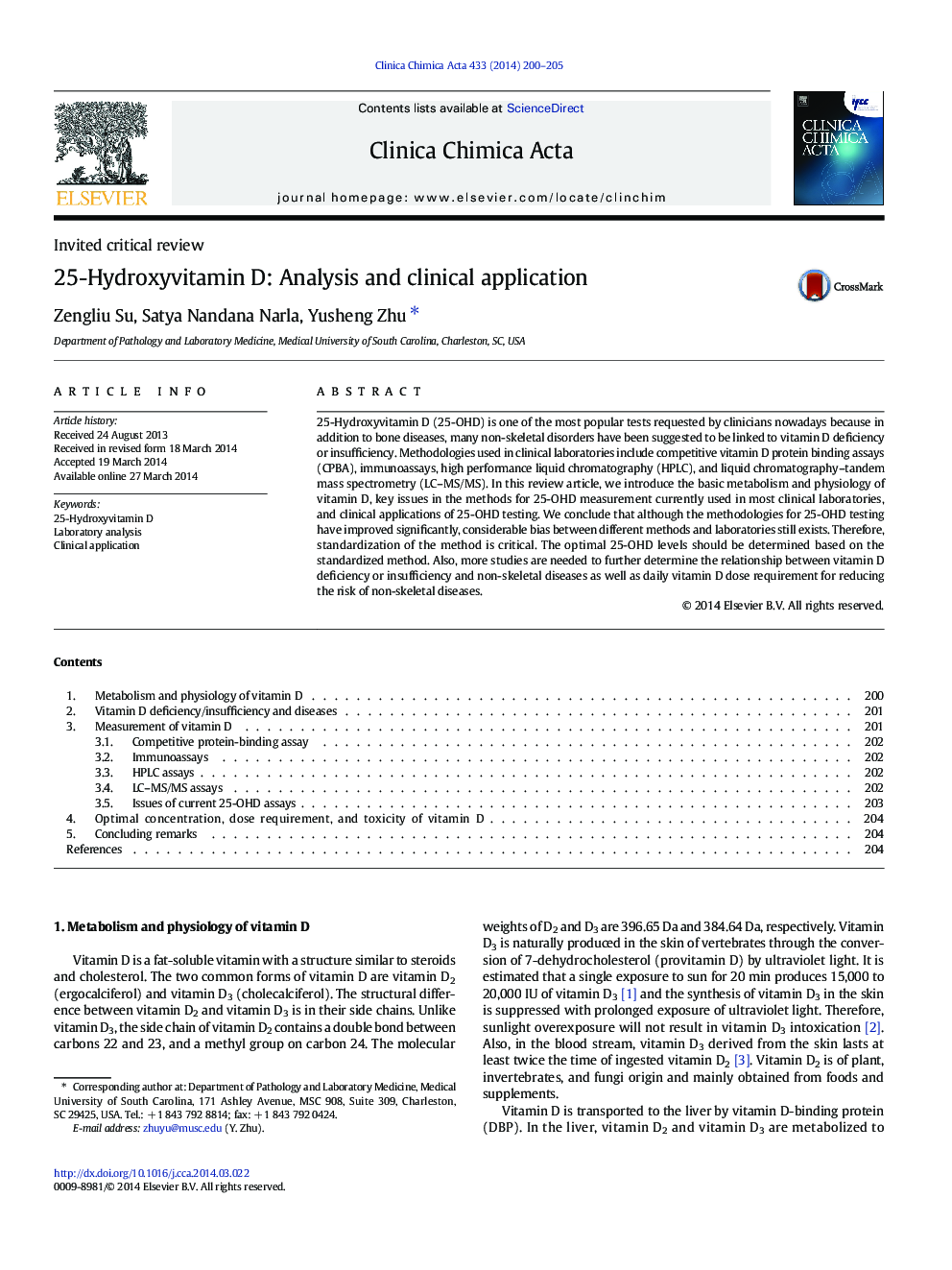| Article ID | Journal | Published Year | Pages | File Type |
|---|---|---|---|---|
| 8311817 | Clinica Chimica Acta | 2014 | 6 Pages |
Abstract
25-Hydroxyvitamin D (25-OHD) is one of the most popular tests requested by clinicians nowadays because in addition to bone diseases, many non-skeletal disorders have been suggested to be linked to vitamin D deficiency or insufficiency. Methodologies used in clinical laboratories include competitive vitamin D protein binding assays (CPBA), immunoassays, high performance liquid chromatography (HPLC), and liquid chromatography-tandem mass spectrometry (LC-MS/MS). In this review article, we introduce the basic metabolism and physiology of vitamin D, key issues in the methods for 25-OHD measurement currently used in most clinical laboratories, and clinical applications of 25-OHD testing. We conclude that although the methodologies for 25-OHD testing have improved significantly, considerable bias between different methods and laboratories still exists. Therefore, standardization of the method is critical. The optimal 25-OHD levels should be determined based on the standardized method. Also, more studies are needed to further determine the relationship between vitamin D deficiency or insufficiency and non-skeletal diseases as well as daily vitamin D dose requirement for reducing the risk of non-skeletal diseases.
Related Topics
Life Sciences
Biochemistry, Genetics and Molecular Biology
Biochemistry
Authors
Zengliu Su, Satya Nandana Narla, Yusheng Zhu,
